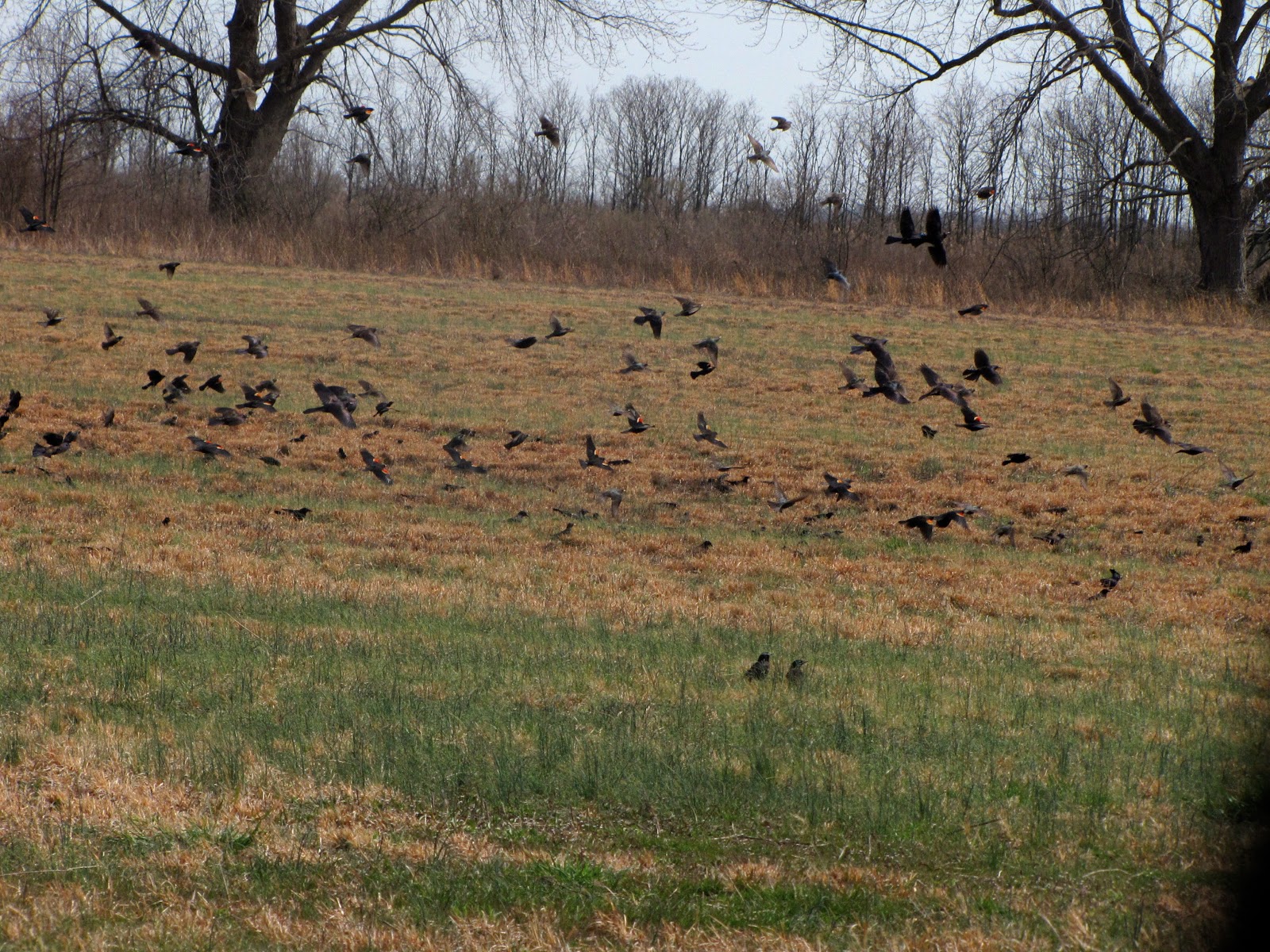What a day yesterday! I got two more lifers and saw a ton of species for my year list. It was such a great day and tiring too. I was so beat when I got in and so pumped after all that I'd experienced.
I visited at the perfect time it seemed. Shorebirds were stacking up on the main pool/mudflats and it seemed like everyone was filling themselves up for the warmer months ahead. With new camera in hand and notes taken, I headed off to document my roaming. Here's what I found.
Icterids like Red-winged Blackbirds (
Agelaius phoeniceus), Common Grackles (
Quiscalus quiscula), and Brown-headed Cowbirds (
Molothrus ater) were so common, especially around the visitors center. Everywhere you turned your eyes and ears you saw and heard the chacking, clinking, and checking of these black flocking birds.
 |
| Northern Cardinal (Cardinalis cardinalis) seen at the visitors center. |
The Raymond Pool was teeming with bird life. Dunlins (
Calidris alpina) flurried around and fed feverishly on the flats, while dowitchers, with their sewing machine bills, dipped in and out of the saturated muck searching for food so minute, even a locavore would stick their nose up at it. Nearby, I would get my life birds and admire the bill diversity presented in the many shorebird species we get to experience throughout the year.
 |
| Dunlins were the most numerous with dowitchers, yellowlegs, avocets, and ducks present as well. |
Shorebirds weren't the only species to enjoy the food rich flats. Green-winged Teal (
Anas crecca carolinensis) were everywhere and left trails with their bills and feet to show where they'd traveled.
Proving to be tough photo subjects, I happened upon two Brown Thrashers (
Toxostoma rufum)
scratching in the leaf litter below. The angling of the pictures means
that they are easily hidden by vegetation but if you can locate the bird
in the top picture, you have very, very good eye. I assisted two beginning birders in the identification of this species to their great satisfaction. It's always nice to have such an amazing start to a new hobby.
After descending the observation tower, I noticed several owl pellets littering the ground below. There must have been some roosting birds here in the winter. While it's probably not possible to determine species, the composition seems to suggest a diet heavy in rodents. I found several skulls, spines, and other bits stuffed neatly into each package.
 |
| One of the many mudflats that the birds were frequenting. Except this one it seems. |
Northern Shovelers (
A. clypetea) seemed to be everywhere and frequented the deeper portions of the flats, dredging for the finer plankton and organic bits. My lifers came in the form of the American Avocets (
Recurvirostra americana) and dowitchers (which due to their silent feeding I presumed to be of the Short-billed (
Limnodromus griseus) variety) pictured below.
 |
| An Osprey (Pandion halieatus) makes an appearance above the marsh nearby. |
 |
| Short-billed Dowitchers. A prime example of inconsiderate naming practices. |
 |
| A Double-crested Cormorant (Phalacrocorax auritis) living up to its name for once. |
 |
| Sleepy Buffleheads (Bucephala albeola) bob in a roadside canal. |
 |
| Several Ruddy Ducks (Oxyura jamaicensis) were feeding in a nearby pond. |
 |
| I'm always amazed at how big Black-bellied Plovers (Pluvialis squatarola) are! They're practically the pigeons of the beach! |
 |
| An American Coot (Fulica americana) watching from the marsh. |
 |
| An American Beaver (Castor canadensis) crosses the marsh pond in search of toothpicks. |
 |
| Size comparison between a Great Egret (Ardea alba) and it's smaller, snowier cousin |
 |
| Attack mode activated! |
 |
| At ease blackbird! |
 |
| An immature Bald Eagle (Halieetus leucocephalus) flies over the trees. |
Towards the end of the day, I listened to the sounds of cackling frogs and a nearby American Bittern (
Botaurus lentiginosus) "thunder-pumping" its territorial song. It was the first time I'd ever heard it and to hear such a distinctive sound of the marsh really made my day.
 |
| A Carolina Wren explores the marsh habitat around a nearby forest thicket. |
 |
| A Great Egret alights in a pool to search for its evening meal. I saw a good number of Great Blues (A. herodias) and a Black-crowned Night Heron (Nycticorax nycticorax) while at the refuge. |
What a day, what a day! So many bird and photos too. I saw 55+ species yesterday and can't wait to see what I can see on my next birding trip. I hope you folks have a lovely week and as always, happy birding ^_^.
























































I love all the pictures in this one! You know I'm a sucker for photos.
ReplyDelete